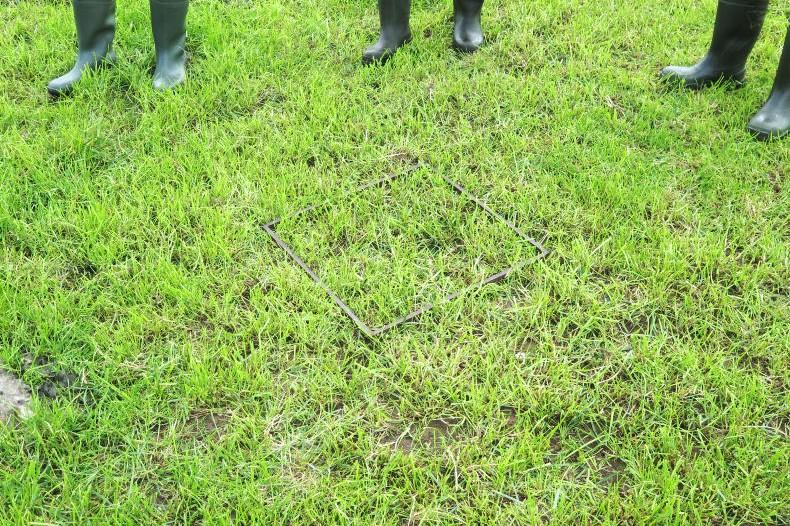Elodie Ruelle from Teagasc Moorepark has been working on a model to predict grass growth rates. Local weather data, average farm cover and the timing and quantity of fertiliser spread all feed into the model. The program is predicting growth rates on 54 farms across Ireland. The predicted growth rates for this week are depicted on the map below and average 50kg/ha/day.
If these growth rates come to pass, and I believe they will be eclipsed in many cases, then grass growth will exceed demand and the amount of grass on farms will surge. Being oblivious to this surge could lead to a scenario where a high proportion of the farm is not suitable for grazing. This is likely to happen on more farms than normal this year, as there was very little grazing done in early spring, due to the wet weather.
Actions
Meal feeding rates should be reduced to the minimum required for tetany prevention, which is usually 2kg/cow/day.Fields will have to be skipped over and closed for silage this week. The aim should be to stock the farm at four cows/ha over the next few weeks. Work this out by dividing the number of cows by four and the result is the area in hectares that the cows should graze.Presuming there is 2kg of meal being fed, the daily grass demand will be 64kg/day when stocked at four cows/ha. The farm may not be growing at this rate yet, but if there is a lot of grass on the farm, eating into this cover will be a good thing and will increase the amount of high quality, leafy grass on the farm over the coming months. Farms that are already in the second rotation are in a good position and can close up fields for silage when the growth comes. The grass wedge and average farm cover per hectare and per cow should be used to make grazing decisions. If waiting for sufficient re-growths on the first rotation before starting on the second round, consider alternating between high and low covers for a few days to buy time and yet maintain quality in the diet. Read more
Dairy management: grass growth ready to take off
US dairy markets plunge to lowest level since 2009 after 'tragic day' for prices
Elodie Ruelle from Teagasc Moorepark has been working on a model to predict grass growth rates. Local weather data, average farm cover and the timing and quantity of fertiliser spread all feed into the model. The program is predicting growth rates on 54 farms across Ireland. The predicted growth rates for this week are depicted on the map below and average 50kg/ha/day.
If these growth rates come to pass, and I believe they will be eclipsed in many cases, then grass growth will exceed demand and the amount of grass on farms will surge. Being oblivious to this surge could lead to a scenario where a high proportion of the farm is not suitable for grazing. This is likely to happen on more farms than normal this year, as there was very little grazing done in early spring, due to the wet weather.
Actions
Meal feeding rates should be reduced to the minimum required for tetany prevention, which is usually 2kg/cow/day.Fields will have to be skipped over and closed for silage this week. The aim should be to stock the farm at four cows/ha over the next few weeks. Work this out by dividing the number of cows by four and the result is the area in hectares that the cows should graze.Presuming there is 2kg of meal being fed, the daily grass demand will be 64kg/day when stocked at four cows/ha. The farm may not be growing at this rate yet, but if there is a lot of grass on the farm, eating into this cover will be a good thing and will increase the amount of high quality, leafy grass on the farm over the coming months. Farms that are already in the second rotation are in a good position and can close up fields for silage when the growth comes. The grass wedge and average farm cover per hectare and per cow should be used to make grazing decisions. If waiting for sufficient re-growths on the first rotation before starting on the second round, consider alternating between high and low covers for a few days to buy time and yet maintain quality in the diet. Read more
Dairy management: grass growth ready to take off
US dairy markets plunge to lowest level since 2009 after 'tragic day' for prices






 This is a subscriber-only article
This is a subscriber-only article










SHARING OPTIONS: